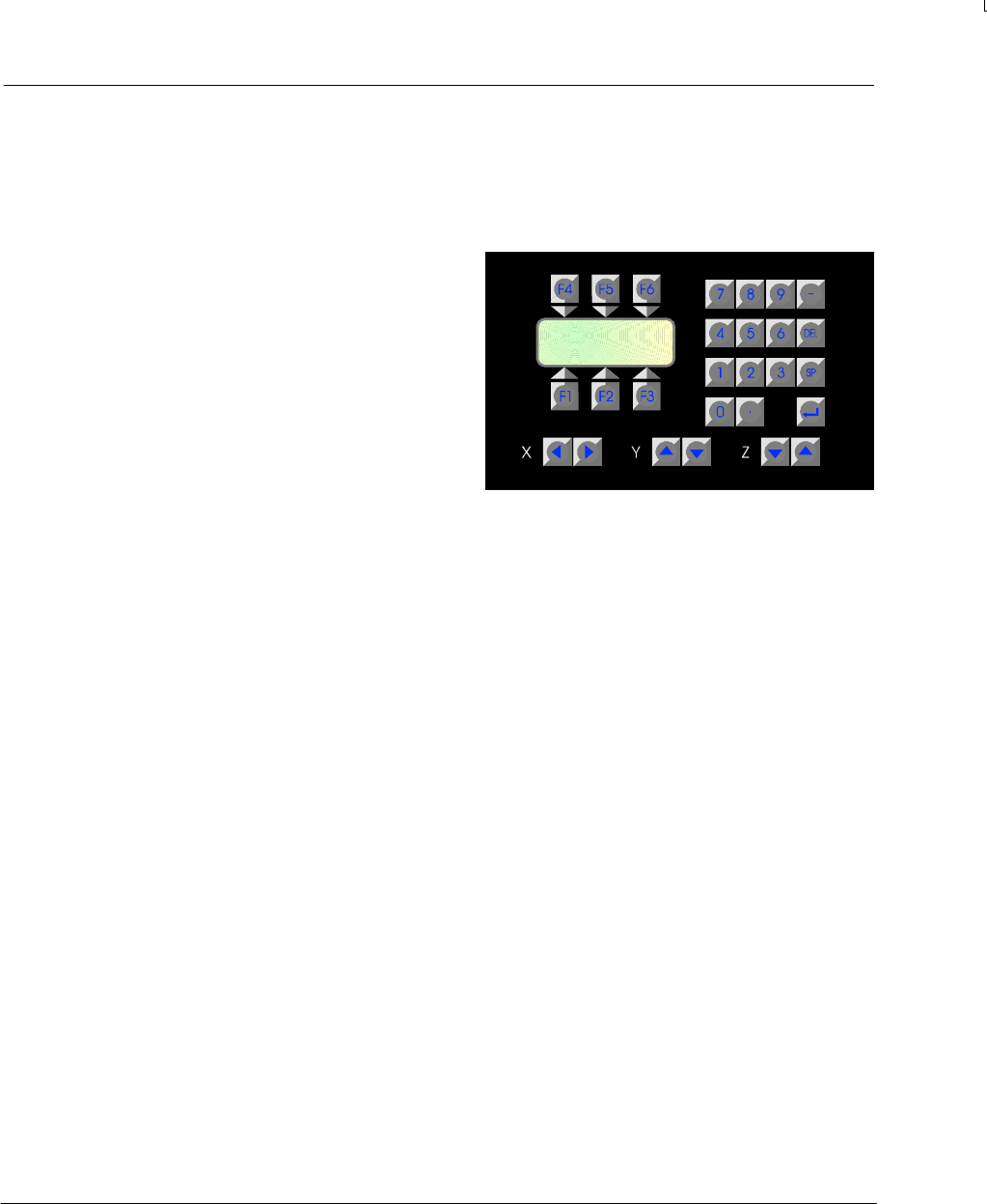
124
B.3.11 KeypadNode
The KeypadNode provides a general purpose interface suitable for standalone machines of all types. It
is a cost effective solution for simple functions such as replacing thumb wheel switches and providing
simple diagnostics. It can also be used as a fully interactive programming panel for machine control.
Features include:
H High speed CAN bus connection
H 20 character by 4 line LCD display
H 27 keys, numeric keypad, function keys
and XYZ control keys
H Software controlled piezoelectric buzzer
Upto4activekeypadscanbeusedwith
MintDrive at any one time.
When connecting a KeypadNode to the CAN2
bus, the node must be added to the network
as usual using the REMOTESETUP and
NODETYPE keyword (see sections B.3.6 on
page 121 and B.3.7 on page 122).
However, because MintDrive allows up to 4 KeypadNodes to be connected to the bus, the
KEYPADNODE keyword must also be used to inform Mint of the terminal channel to be used.
The terminal channel for a KeypadNode is assigned using the Mint constant _tmLCD1, _tmLCD2,
_tmLCD3 or _tmLCD4.
For example, assuming the KeypadNode is configured as node 14 (the default value) type the following
commands to add the node to the network on channel _tmLCD1 :
BUS=2
NODETYPE.14 = _ntKEYPAD
PAUSE NODELIVE.14
KEYPADNODE._tmLCD1 = 14
where:
BUS=2 sets the default CAN Bus for following commands to CAN Bus 2.
NODETYPE.14 = _ntKEYPAD assigns node 14 to a Keypad peripheral.
PAUSE NODELIVE.14 waits for the node to become live.
KEYPADNODE._tmLCD1 = 14 assigns keypad terminal channel 1 to the node.
The PAUSE NODELIVE command is required to force a wait until the node is live before the
KEYPADNODE keyword is executed. Without this command an error will occur because there is a small
delay before the node becomes live. It should now be possible to communicate with the device.
The VIEW keyword can be used to check that the KeypadNode has been connected and is recognized.
Type:
VIEW NODELIVE
The KeypadNode should be displayed next to its node number. An L indicates that the node is live, a D
indicates dead.


















